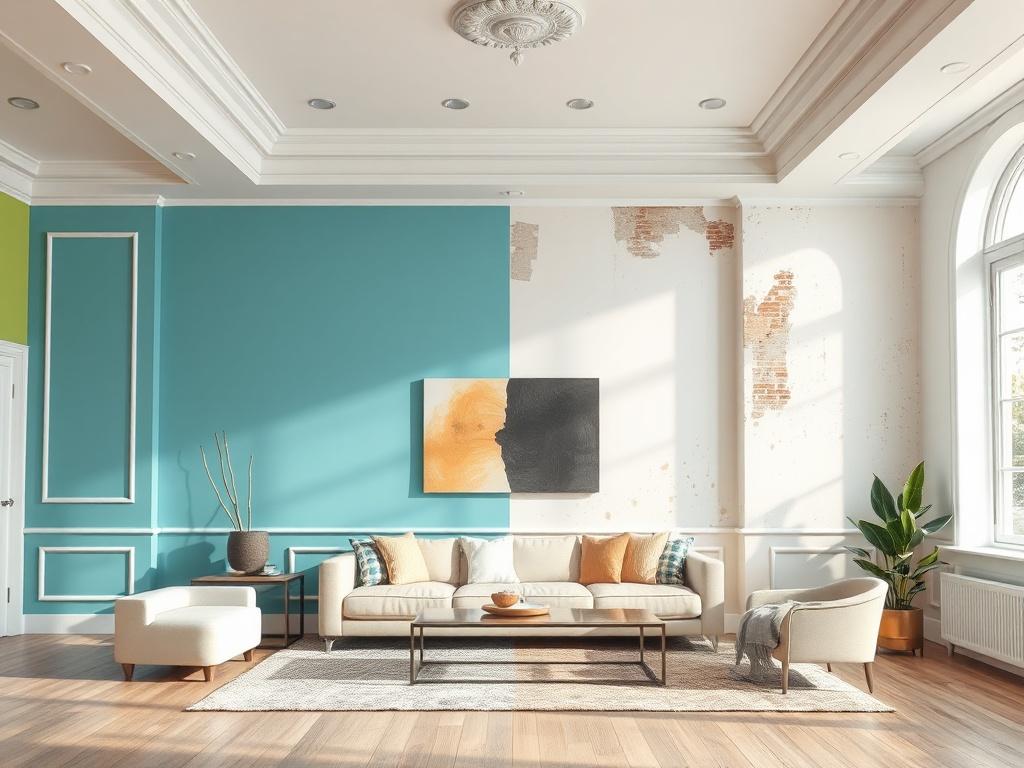
When it comes to interior painting, many homeowners assume that two homes of the same size will incur similar costs. However, the reality is quite different. Interior painting isn’t one-price-fits-all—prep work, trim, ceiling height, and wall condition all affect your final quote. These factors can lead to significant price variations, even for seemingly identical spaces. Understanding these variables can help homeowners make informed decisions and manage their budgets more effectively.
This blog post explores the key elements that influence interior painting costs. From the extensive prep work required to achieve a flawless finish to the impact of trim style and quality, we'll delve into how each factor plays a crucial role in determining your painting estimate. Additionally, we'll examine how ceiling height and wall condition can cause pricing variations that may surprise you.
The preparation work required before painting significantly affects the overall cost of an interior painting project. Each home presents unique challenges, such as patching holes, sanding surfaces, or applying primer, which can vary widely depending on the wall condition. For instance, a home with damaged or uneven walls will require more extensive prep work, resulting in increased labor and material costs. Homeowners should not overlook the importance of this initial step, as skipping or rushing prep can lead to poor paint adhesion and a less-than-desirable finish, ultimately costing more in the long run.
In addition, the type of surface being painted plays a pivotal role in determining prep work requirements. For example, drywall typically requires less extensive preparation than wood paneling or textured surfaces. Professionals analyze the existing conditions and recommend the appropriate prep measures, which influences the final quote significantly. When evaluating your estimate, remember that thorough prep work not only enhances the appearance of your painted walls but also ensures longevity, making it a wise investment for any interior painting project.
When it comes to interior painting, trim style and quality play a significant role in determining the overall cost of your project. Homes with ornate crown molding or elaborate baseboards require more meticulous work than those with simple, straight-edged trim. Painters must take extra care to ensure even coverage and avoid drips or roller marks, which often leads to increased labor costs. Additionally, the material of the trim can also affect your estimate. For example, painting high-quality wood trim may require special primers and finishes, while lower-grade materials might need fewer preparatory steps. All of these factors contribute to a more complex and, therefore, costlier painting job.
In contrast, homes with standard trim may have lower painting costs due to the simplicity of the task. Minimalist design elements typically require less time and effort, allowing painters to complete the job more efficiently. However, it's essential to consider that even simple trim can require thorough preparation, especially if it hasn't been painted in a while or has suffered from wear and tear. In summary, the style and material of your trim significantly influence the overall estimate for your interior painting project, making it crucial to assess these elements carefully when planning your budget.
Ceiling height significantly influences the overall cost of interior painting. Taller ceilings require additional labor and equipment, such as extension poles and scaffolding, to reach them safely and effectively. This extra setup not only takes more time but also increases labor costs. If your home features vaulted or exceptionally high ceilings, expect your painting estimate to rise accordingly, as painters need to account for these challenges when quoting.
Additionally, the condition of your walls plays a crucial role in determining your final painting price. If the walls are uneven, damaged, or have old paint that needs to be removed, painters will need to invest time in repairs and preparations before applying fresh coats of paint. This prep work can include patching holes, sanding surfaces, or applying primer, all of which add to the overall project duration and cost. Homeowners should consider these factors when assessing painting quotes, as they can lead to significant differences in final prices, even in homes of similar size.
Ready to give your home a fresh new look? At Fox Painting, we specialize in interior house painting that brings color, style, and personality to every room. Serving homeowners across Orange County for over a decade, our experienced painters combine expert craftsmanship, premium materials, and an eye for detail to create stunning, long-lasting results.
Whether you’re updating a single room or your entire home, we’ll work with you to bring your vision to life—beautifully and efficiently. Explore our interior painting services online or contact us today to schedule your personalized consultation.